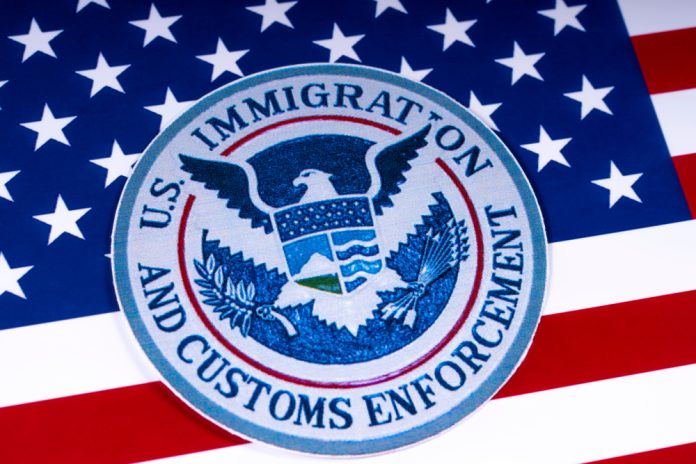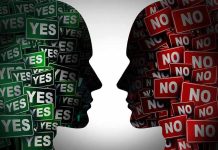
Rep. Maxine Waters brazenly confronted armed National Guard troops during anti-ICE protests in Los Angeles, demanding to know “Who are you going to shoot?” as President Trump’s 2,000 deployed soldiers faced off with violent demonstrators.
Key Takeaways
- President Trump deployed 2,000 National Guard troops to Los Angeles to manage violent anti-ICE protests, the first such deployment since 1965.
- Rep. Maxine Waters directly confronted armed federal agents, challenging their presence and attempting to enter a federal building to check on a detained protester.
- California Governor Gavin Newsom and other Democratic governors condemned the deployment as “an alarming abuse of power” and requested withdrawal of troops.
- Violent protests have erupted across Los Angeles with 27 arrests, including individuals throwing Molotov cocktails and driving motorcycles into police.
- The confrontation highlights the ongoing tension between Trump’s immigration enforcement policies and California’s sanctuary status.
Waters Confronts Armed Federal Agents
During escalating anti-ICE protests in Los Angeles, Congresswoman Maxine Waters directly challenged federal agents, creating a tense standoff that exemplified the growing friction between federal immigration enforcement and local opposition. Waters, known for her outspoken criticism of immigration enforcement, approached armed National Guard troops with provocative questioning about their intentions toward protesters and elected officials. The confrontation occurred as demonstrations against President Trump’s immigration raids intensified throughout the city, with some protests turning violent despite calls for peaceful assembly.
Waters boldly confronted the armed personnel with direct questions about their potential use of force. “Are you going to shoot an elected official? If you shoot me, you better shoot straight,” Waters told the federal agents, according to the Daily Wire. Her provocative approach highlighted the heightened tensions between federal authorities and local officials who oppose the Trump administration’s immigration enforcement actions. Waters also attempted to enter a federal building to check on SEIU President David Huerta, who had been detained during the protests, but was denied entry by guards.
Trump’s National Guard Deployment Sparks Backlash
President Trump’s decision to deploy approximately 2,000 National Guard troops to Los Angeles has ignited fierce criticism from California state leadership. The deployment, which occurred without a request from Governor Gavin Newsom, marks the first such federal military presence in Los Angeles since the 1965 Watts riots. The Department of Homeland Security justified the action by claiming the immigration raids targeted the worst of the worst criminal illegal aliens, though critics argue the scale of enforcement is disproportionate and politically motivated.
“An alarming abuse of power,” Democratic governors stated in their joint condemnation of the deployment.
Governor Newsom has forcefully opposed the troop deployment, accusing the Trump administration of manufacturing a crisis rather than responding to a legitimate need. He characterized the federal action as “inciting and provoking violence, creating mass chaos and militarizing cities,” and formally requested that the administration withdraw the National Guard troops. The governor’s request has been supported by numerous Democratic governors across the country, who view the deployment as an infringement on state sovereignty and a threat to public trust in government.
Violent Protests Escalate Across Los Angeles
What began as protests against immigration enforcement has escalated into violent confrontations throughout Los Angeles. The city has become a focal point in the Trump administration’s immigration crackdown, with its status as a sanctuary city placing it directly at odds with federal enforcement priorities. Protesters have blocked major thoroughfares, including the 101 Freeway, while more extreme incidents have included a protester jumping from a burning Waymo taxi near the Metropolitan Detention Center and others throwing Molotov cocktails at law enforcement.
“The Trump administration is committed to restoring the California Dream,” White House spokesperson Kush Desai stated, defending the federal response to the unrest.
The Los Angeles Police Department has declared parts of downtown an unlawful assembly following scattered violence, with 27 protesters arrested on various charges. The FBI has added one man accused of assaulting a federal officer to its Most Wanted list, offering a $50,000 reward for information leading to his arrest. Despite Mayor Karen Bass urging protesters to express their outrage peacefully, the situation remains volatile as federal authorities continue immigration enforcement actions throughout Southern California, including in the garment district and other locations.
Federal-State Tensions Reach Breaking Point
The confrontation between federal immigration enforcement and California’s resistance has evolved into a potential constitutional crisis. President Trump has threatened to withhold federal funds from California to influence its political stance on immigration, while reports suggest his administration may cut federal grants to California universities. In response, Governor Newsom has proposed withholding $80 billion in taxes from the federal government, dramatically escalating the standoff between state and federal authorities.
Los Angeles stands at the epicenter of this conflict as both a sanctuary city and now the site of a significant military deployment. The Trump administration’s aggressive enforcement of immigration laws contrasts sharply with local officials’ commitment to protecting immigrant communities. With Waters directly challenging armed federal agents and Newsom condemning the deployment as “not to meet an unmet need, but to manufacture a crisis,” the situation highlights fundamental disagreements about federal authority, states’ rights, and immigration policy that continue to divide the nation.







